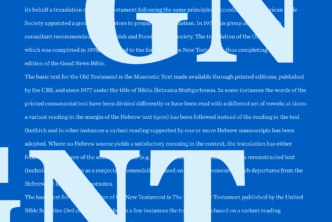Most people who speak English know that Bobby, Billy, Betsy, and Benjy are all short for something else. Your little Suzy will likely one day outgrow her nickname and revert to the more adult “Susanna.”
But nicknames sometimes go through a reverse process, taking on a life of their own disconnected from their progenitors. Everybody who spoke English in years past used to know that “Nelly” was short for “Helen,” but the connection between the two has weakened: the most prominent “Nelly” today (Google says) has “Nelly” on her birth certificate, not “Helen” (interestingly, she got the name from a Soviet gymnast named Нелли whose parents were very unlikely to know Nelly’s English derivation). The diminutive form “Nelly” has established its own independent existence.
A diminutive is a word or affix that indicates small size or, often, the quality of lovableness or familiarity. “Nelly” and “Suzy” are names you give to a lovable little girl in your family. You don’t call a grown Susanna “Suzy” unless you have established a certain amount of that familiarity.* The diminutive is a term of endearment.
Unless it isn’t. Like with “Nelly.”
So how do you know whether a diminutive in English—or in the Greek New Testament—is a Suzy or a Nelly, a term of endearment or a form that has established its own existence and shed its associations with lovability?
Usage. As in all language, usage determines meaning. If, broadly speaking, “Nelly” is no longer used to express endearment or small size, then it’s no longer a diminutive.
Little Greek Dogs
Finally to the Greek: κύων (kuon) is Koine for “dog.” It occurs just five times in the New Testament, because (surprise) the New Testament doesn’t talk about dogs very much. But there’s another Greek word for “dog” that appears four times, and it’s a diminutive: κυνάριον (kunarion).
The -αριον (-arion) affix is what makes the word a diminutive, just like “-sie” in English turns toe into tootsie, Beth into Betsy. In Greek, an ὄνος (onos) is a donkey; an ὀνάριον (onarion) is a little donkey. A παῖς (pais) is a child; a παιδάριον (paidarion) is a little child.
But the Nelly effect is visible in Greek diminutives in the NT: when Peter draws a sword and strikes the high priest’s servant, he cuts off his ὠτάριον (otarion). Presumably, grown men in arrest parties in NT times didn’t have cute little ears.
Likewise with κυνάριον (kunarion): it appears in basically one NT pericope, the conversation Jesus has with the Syrophoenician woman. He says it’s not right to throw the children’s bread to the κυνάριον (kunarion), and she deftly replies (I’ve always loved this passage) that even the κυνάρια (kunaria) get to eat the scraps that fall off their master’s table (Matt 15:26–27; Mark 7:27–28).
Did Jesus really mean to specify that you don’t throw the kids’ food to little dogs? Maybe. Some interpreters have thought so over the years, and Jesus is surely capable of that kind of subtlety. Maybe he chose that word because littler dogs are likely to be inside homes, not big dogs. But most students of NT Greek today see the Nelly effect here: Jesus is just using an alternate form for “dogs,” with no comment on their size or lovability.
In a helpful and rigorous article in the journal Biblical and Ancient Greek Linguistics, Jonathan Watt lists a few other “faded” or “bleached” diminutives:
- • ὀνάριον (onarion, “donkey-DIM”)
- • παιδίον/παιδάριον (paidion/paidarion, “child-DIM”)
• κοράσιον (korasion, “girl-DIM”)
• νεανίσκος (neaniskos, “boy-DIM,” Matt 19:20, 22…)
• θυγάτριον (thugatrion, “daughter-DIM”)**
And this is important to more than just Jesus’ conversation about dogs and scraps; it makes a difference—doesn’t it?—if John addresses “my children,” or “my little children” eleven times in his first epistle. People who study Greek do so because they want a greater level of insight into the text of Scripture, or they want to be able to say “Thus saith the Lord” in the pulpit—or the classroom, or the journal—with a greater degree of confidence.
Certain features of a given language wear away over time, like St. Peter’s toe at the Vatican. And some features grow in complexity. Greek is no exception. Watch for the Nelly effect.
*Even the professionals who go by the diminutive forms of their names—such as “Suze” Orman—do so in part (I judge) because they want to establish a girl-next-door familiarity and trust.
**Here’s a direct Logos link if you have BAGL. The “Semantics and Pragmatics of Diminutives” chart in that article is worth the price of the journals. Very interesting.
For those interested in Greek linguistics, senior editor of BAGL Stanley Porter has recently written a collection of essays, Linguistic Analysis of the Greek New Testament: Studies in Tools, Methods, and Practice. He includes a number of fascinating topics, and ends with exegetical praxis.




